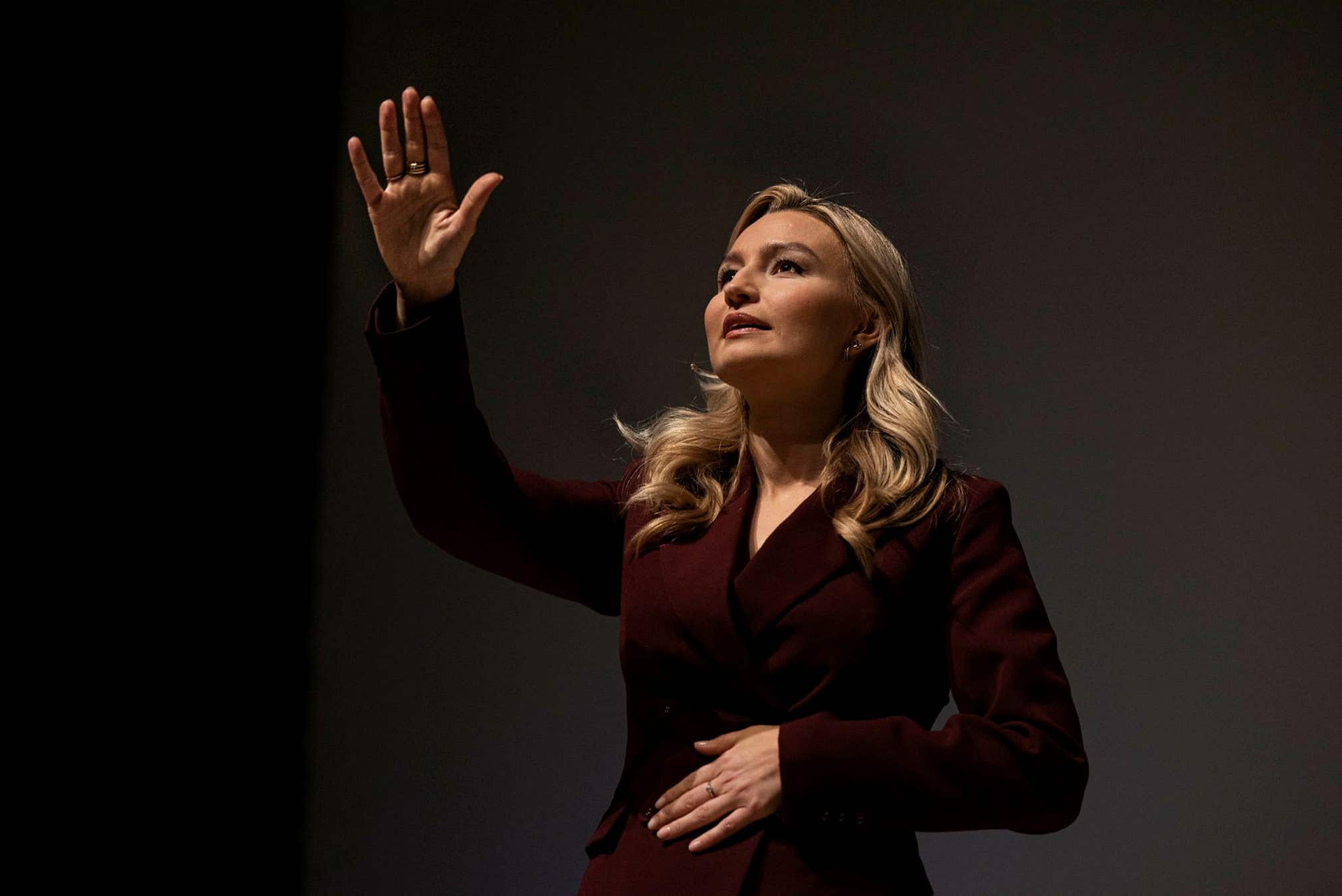The new neutral. (2021–22)
So, a stereotypical pattern in the media has thus been to depict women from above (a perspective that makes you look smaller, more harmless and powerless) and to make men look huge and dominant by lying low as a photographer.
However, a report was recently released that shows this may be about to change. For the report Rättvisaren 2022 – which is produced by Mediekompaniet and Kantar Sifo – image semiotician Karin Sandelin has examined how Swedish politicians are portrayed in the media. And one conclusion is that women and men are portrayed fairly similarly. Women smile more and bigger. But otherwise, the difference is greater in how politicians at national and local level are portrayed (national politicians in action during press conferences, local politicians with everyday outdoor portraits).
A super interesting pattern, however, is that both women and men are now portrayed with the imagery of the classic “masculine” power portrait. Often in grand staircases, combined with “poses that convey immovability through symmetry, crossed arms or leaning against the banister” and “perspectives that place us as viewers below them, subordinate …”
Example:

Photo: Anna Tärnhuvud, Göteborgs-Posten, 2021.
1. Swedish democrat Tobias Andersson occupying an entire stairwell by himself.

Photo: Tomas Oneborg/TT, Göteborgs-Posten, 2022.
2. Moderate politician Hanif Bali descending an ice blue escalator.

Photo: Roger Turesson, Dagens Nyheter, 2022.
3. Christian democrat Ebba Busch stealing Center voters in the countryside.

Photo: Anna Tärnhuvud, Göteborgs-Posten, 2022.
4. Magdalena Andersson blocking us from seeing what is upstairs in the Sagerska house (where prime ministers of Sweden live in weekdays).
This is typical. That the “neutral” but implicitly male way of posing, dressing and communicating is made the norm and high status. According to media researchers Gunilla Jarlbro and Mia-Marie Hammarlin (in Women and men in the public light), it is also the recipe for avoiding focus on gender, clothing and appearance as a female politician, and takes Angela Merkel and Tarja Halonen as examples:
“By conforming to norms – such as professionalism, matter-of-factness, rationality, toned-down exterior and an unwillingness to talk about private life – they have been identified as politicians first and foremost.”
What do you think? Is it even possible to take a “neutral” power portrait? What does your ideal image of leadership look like? And to you, photographers: what’s wrong with eye-level perspective? 👀
